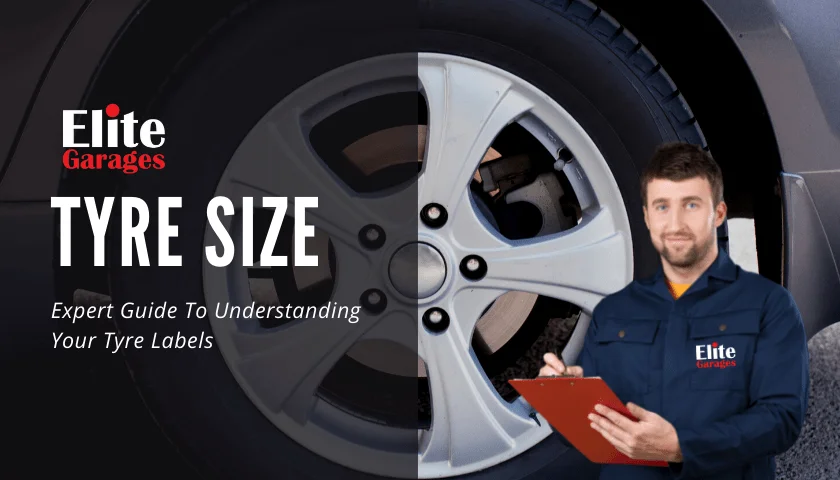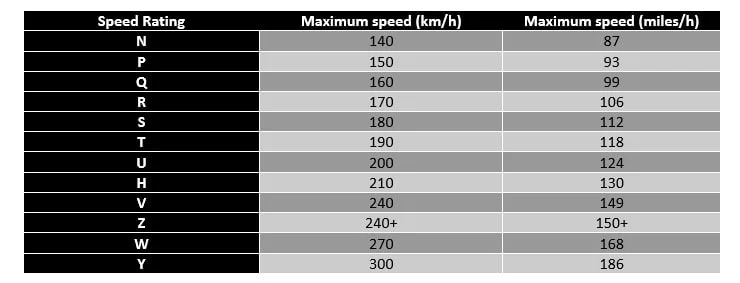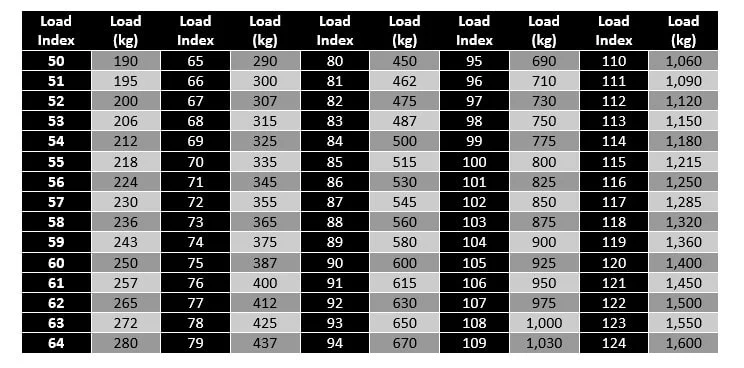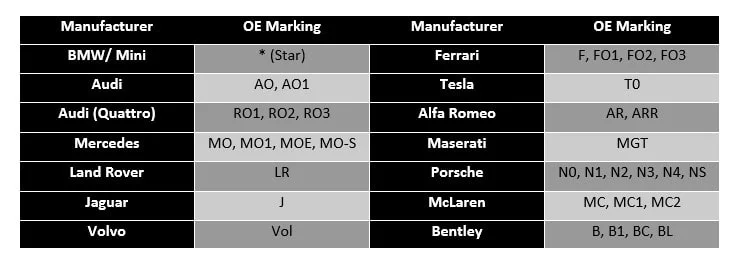
Last week we discussed the DOT code to help determine the age of car tyres and to stay on topic this week, we take a closer look at tyre size. It’s important to understand tyre labelling so you know how to identify your tyre size and type. Our expert technicians have put together a handy tyre size guide covering DOT codes, load and speed ratings and OE fitment tyre markings.
Know Your Tyre Size
First up, we look at the different markings indicating tyre sizing. The size of a tyre has four components which are followed by the load and speed rating all of which are important considerations when buying car tyres. As a recap, here is what you need to know about new regulations and EU tyre labels.
- Nominal section width: “195” This is the widest part of the tyre when fully inflated and is measured in mm.
- Aspect ratio: “55” This is the width of the sidewall as a percentage of the nominal section width.
- Radial Construction: “R” This means the cables radiate around the axis of the tyre.
- Nominal rim diameter: “16” This is the diameter of the rim measured in inches
Tyre Size and DOT Codes
As discussed in a previous article, the DOT code of a tyre indicates the date on which the tyre was manufactured. It has four numbers but some will have three if they were made between 1980 and 1999.
You can generally find the DOT codes on the sidewall of a tyre, which means they have high visibility. However, some only have the DOT code on one side of the sidewall, so it may be placed on the inside of the tyre. An example of DOT code is “3421” which means the tyre was made in the 34th week of the year 2021.
The general rule is that if the DOT code on a tyre shows it is older than 6 years, it should not be fitted under any circumstance. You should also check the spare tyre as if they are over 6 years old, they also pose a threat even if it was never used.
Making Sure Your Car Tyres Are Fit For Purpose
When a tyre is over 5 years old it would likely have started to deteriorate. This includes losing significant sidewall strength and it may have cracks that will not be visible when uninflated. A very old spare may delaminate or have another failure within a short time of being fitted. If a car is over 5 years old, all tyres (including the spare) should be checked to ensure it is still fit for use. If you’re looking for new car tyres, this next section of our tyre size guide is exactly what you need.
Load and Speed Ratings
The speed rating of a tyre shows what speed that tyre can maintain for 10 minutes without failure. During this test, the speed of the tyre is increased in 6 mph increments every 10 minutes. At Elite Garages, we will never fit a lower speed rating when fitting a new tyre on a car. This is because the speed rating should not be lower than the original equipment on the production line of that car. While increasing the speed rating is acceptable on vehicles, speed ratings should be matched on both axles of the car and close attention should be paid to tyre size.
 Load Index
Load Index
The load index shows how much mass each individual tyre can withstand. A normal, standard four-wheel car’s tyre will need to have a load index that can handle more than 25% of the car’s mass. This is so that when the load index of all four tyres is combined, they can support more than 100% of the total mass so the tyres can safely support passengers and luggage.
Tyres for commercial vehicles usually have two load index ratings such as “112,110”. The 112 load index correlates to commercial vehicles with a single wheel on each side of an axle holding 1,120kg per tyre. The 110 would be for twinned tyres on each side of an axle, holding 1,060kg per tyre. Look at the load index table below to gain a better understanding of tyre size and the load index.
 OE Fitment Tyre Markings And Tyre Size
OE Fitment Tyre Markings And Tyre Size
Original equipment tyres (OE tyres) are tyres made for a specific vehicle manufacturer. These are generally optimised for the performance which is most desired for a specific model. The OE marking is written on the sidewall, usually directly after the size and looks something like this: “225 55 16 84W AO”.
Each specific manufacturer has different markings for tyre size and OE markings but some may have multiple options depending on the requirements for different models of cars within their fleet. While many manufacturers have OE markings for their cars, most of them do not require OE marked tyres as they do not need heightened performance.
For example, Audi would recommend an AO marked tyre for a high-performance Audi, such as an A6, but would claim it is not necessary for a less performance orientated model such as an Audi A1. The most common OE marked tyres are MO/AO/*. However, some tyres will have crossovers of markings between vehicle manufacturers, *MO and RO1MO.
Tyre Markings For Runflats
Tyre manufacturers tend to have their own tyre markings for their Runflat tyres. Dunlop (DSST), Goodyear (EMT), Hankook (HRS), Michelin (ZP), Yokohama (ZPS). Some tyre manufacturers use general run-flat tyre markings such as RFT or ROF. Some tyres are reinforced which means they can handle a bigger load than the standard load of that specific tyre size. These are generally found on larger vehicles, and the tyres will be marked “XL”.

Get in touch with our team today for advice on the tyre size, tyre tread or to answer any other motoring questions you may have. This includes “where to change car tyres”, “what tyre size is right for my car”, and “where to find the best car tyres near me”. To find the closest Elite tyre fitment centre, visit our website and remember to order your car tyres online.
About Us
Opening Times
Saturday : 8:30–4:00
Sunday : closed
More Information
Contact UsCustomer Information Pack
Check MOT Due Date
Free MOT reminder
Careers
Legal Information
Recent Posts
- Regular Car Maintenance: Joe Achilles Tests Elite Garages’ 250,000-Mile BMW
- Clutch Replacement Near Me: A Comprehensive Guide for UK Drivers
- Antifreeze Coolant: What It Is, How It Works, and When to Use It
- MOT in Brighton: Your Essential Guide to Testing, Servicing and Tyre Safety
- Uneven Tyre Wear Explained: Is It Time for a Wheel Alignment Service?


